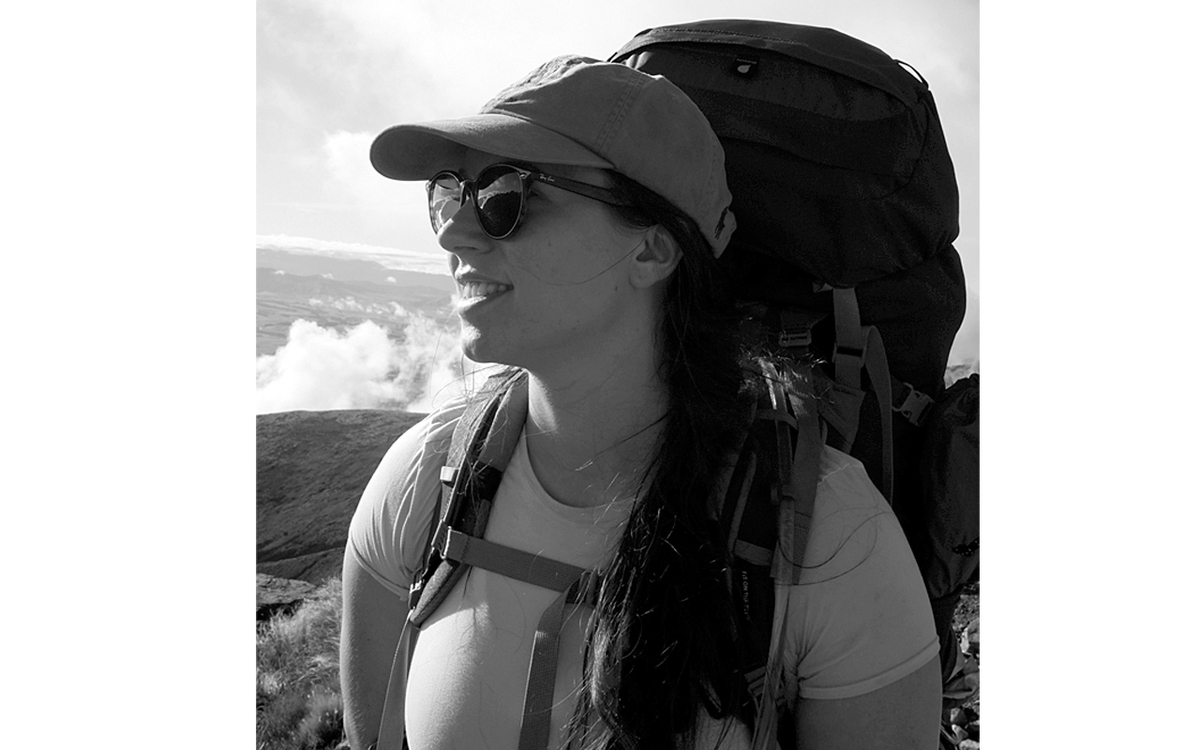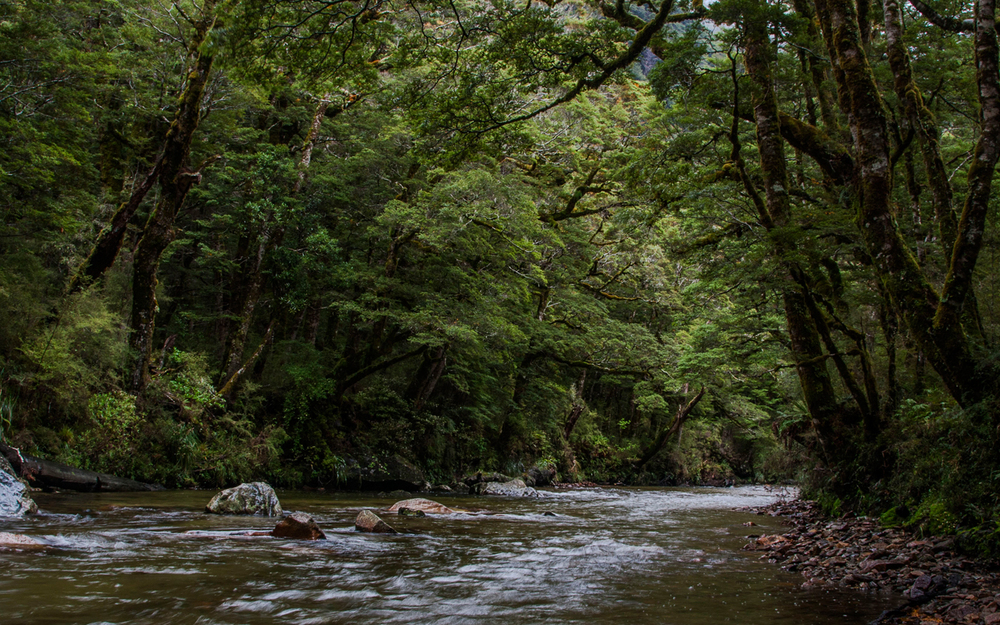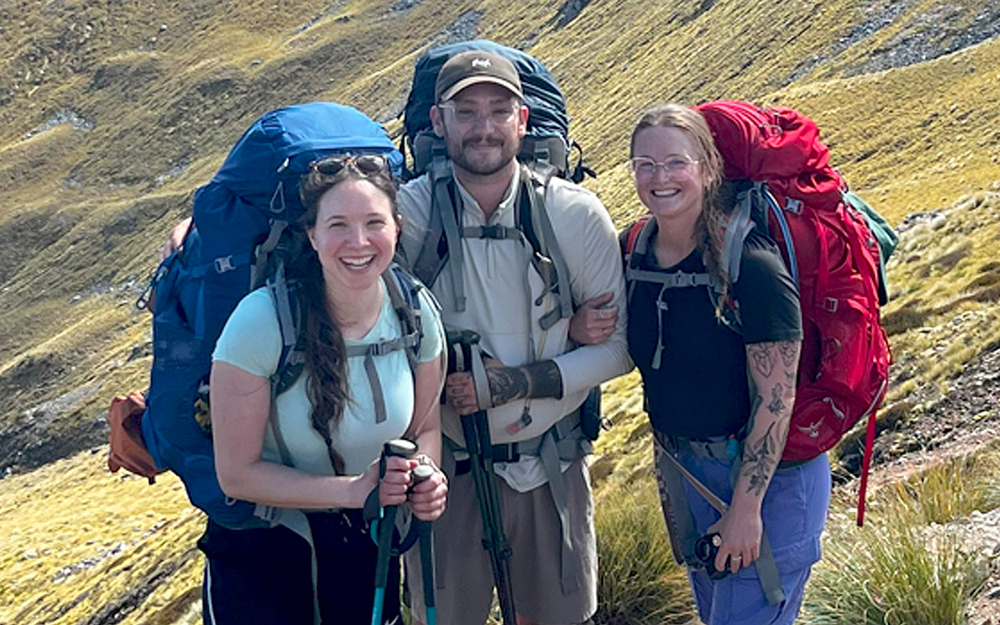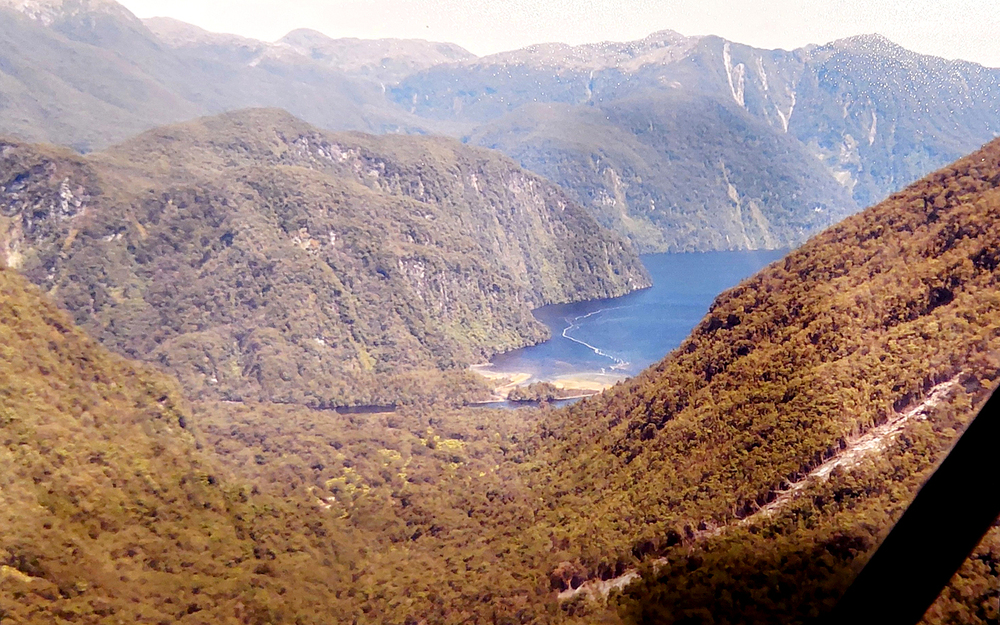Moose encounter "an impressive and surprising moment"
Sue Fea © the Southland App
30 April 2025, 5:29 AM
 Annie-Pier Bourgeois said her moose encounter on 29th March, near the Iris Burn with two fellow Canadians, was an impressive and surprising moment. Photo: Supplied
Annie-Pier Bourgeois said her moose encounter on 29th March, near the Iris Burn with two fellow Canadians, was an impressive and surprising moment. Photo: SuppliedAnnie-Pier Bourgeois, now back at work in Quebec, was leading the Canadian trio on the Kepler when they spotted a moose, and says it was “an impressive and surprising moment”.
“It’s something that few people are lucky enough to experience.”
She and her two friends, who are in NZ on working holiday visas, had no clue that a moose sighting had recently been reported in Fiordland, also on the Kepler Track.

The Iris Burn on the Kepler Track, where three Canadian trampers saw a moose in antler on 29th March. Photo: Chris Watson/ProFocus Photography
“We didn’t know anything about that,” she says. “I didn’t think it was possible to see such large mammals—we were mostly expecting to see birds,” Bourgeois says.
“That’s why my first reaction was to wonder whether it could be another animal, like an elk, for example, because I didn’t know there could be moose in the Park.”
However, after doing some research and comparing animals, Bourgeois, who’s very familiar with moose, says “the evidence really leans more toward it being a moose”.
The size of the animal and its uniform dark brown colour made her sure it was a moose.
“I was surprised and impressed by the size of the animal. I wasn’t expecting to see something like that!” she says.
“I was surprised to see a moose, because it’s rare to come across one while hiking, even here in Quebec, so I felt we were lucky.”
Bourgeois says she accompanies her partner on hunting trips and has completed hunting courses.
“We watch a lot of documentaries about moose and white-tailed deer, so it’s very easy for me to tell the difference between a moose and a deer. I’ve seen moose in person a few times in Canada.”
Their Tracknet driver Brenda Thomas told DOC staff about the sighting.
“DOC then emailed me to verify the information and put me in contact with the researcher Mr Tustin, with whom I later shared my observations.”
Brenda Thomas says since the reported possible sighting by an experienced American vet recently, she’s made a point of asking any Kepler Track shuttle passengers if they saw a moose at all.
“There could have been other sightings that have gone unreported so, when I remember, if I’m on the Kepler Shuttle run picking passengers up from Rainbow Reach or the Control Gates, I ask them.”

Canadian tourists Annie-Pier Bourgeois, Antoine Beauchamp and Chanel Sabourin-Dubois believe they spotted a Moose - with antlers - on the Kepler Track only days after a sighting by Minnesota veterinarian Norbert Nigon. Photo: Supplied
The response has always been ‘no’, so Thomas says she was "gobsmacked" when one of the young Canadian trio responded “yes”.
“Because I was expecting a "no!” she says.
When she arrived back in Te Anau at the DOC Centre she felt prompted to go in and tell the staff. “The lady kindly offered to email the Canadians and pass on local moose researcher Ken Tustin’s details too.”
Thomas says she grew up in the North Island and had no idea that moose had been released into Fiordland National Park 115 years ago.
She read a media article about the March moose sighting and, after the Canadians’ more recent sighting, met with Tustin and his wife, Marg.
“I find their decades of dedicated research of the moose in Fiordland quite inspiring, and the knowledge the Tustins have kindly shared has made me even more curious."
"I'm currently reading Ken’s book - ‘A Wild Moose Chase’, which is educational, entertaining and I can't put it down!"
DOC Te Anau operations manager John Lucas says they received the report of another possible moose sighting by Canadian tourists on 1 April.
“Once we verified it wasn’t an April Fool’s Day prank, we passed the information on to Ken Tustin to follow up,” he says.
“Like others, whilst we are interested in this latest moose sighting, until we receive photographic proof to the contrary, we continue to take the view that we are most likely dealing with a deer, such as a red deer or possibly a red/wapiti cross that has been mistaken for a moose,” Lucas says.
The latest series of sightings has also rekindled memories and stories from hunters in earlier days.
Te Anau’s Yuanita Evans says her dad, longtime Te Anau resident Jim Evans, who passed away at 92 last year, found a moose skeleton in a cave in Fiordland years ago, believed to be in the 1960s. Pat McConnell, who worked for the National Parks Board at Clifton, was with her dad at the time, Evans says.
Her uncle also saw a moose around the same time down in the Bluecliffs-Rowallan Forest area, east of Lake Hauroko, bordering the Park.

Dusky Sound's Supper Cove, the original release point of moose in 1910, and the area where Jim Evans and Ranger Pat McConnell found a moose skeleton in 1971. Photo: Ken Tustin/Supplied
“The skeleton of that was later found down by Te Waewae Lagoon,” Evans says.
“They believe the moose got caught up trying to cross the Wairaurāhiri River and got washed out to sea. I think my uncle had told Dad that he thought it had an injured leg,” Evans recalls.
“Eventually the tide brought it back in, so they did travel a long way from where they were originally released.”
Her parents, who have lived in Te Anau for 42 years, were living in Tuatapere at the time, and Evans says her dad passed all the information as to the whereabouts of the bones to Fiordland moose researcher Ken Tustin before he passed away.
“I remember Dad saying Ken said he had searched the area where Dad found the bones, and I think Dad said it was on the other side of the river.”
An experienced bushman and hunter, her dad had spent a lot of time in the bush when he was younger and flew the area frequently in helicopters and accessed it by boat, also helping with the Parks Board. He knew the terrain and the wildlife.
“We have a few helicopter pilots in the family, so Dad accessed areas the average person never gets to.”
Evans says while those involved have all passed on, they’ve always been a family of “believers” when it comes to moose sightings in Fiordland.
“Dad always said, “Well, there’s a lot of area out there and we know they were here, so they could still be here,” she says.
“Remember when they said the takahe was extinct and then one was found.”
Invercargill doctor Geoffrey Orbell led a team that discovered the takahe in Fiordland’s Murchison Mountains in 1948, 50 years after it had been declared extinct.
“Fiordland is a huge area and a lot of it is not accessible by people.”
READ MORE:
Second Fiordland moose sighting in as many weeks
Renewed Excitement: Moose Sightings in Fiordland Park